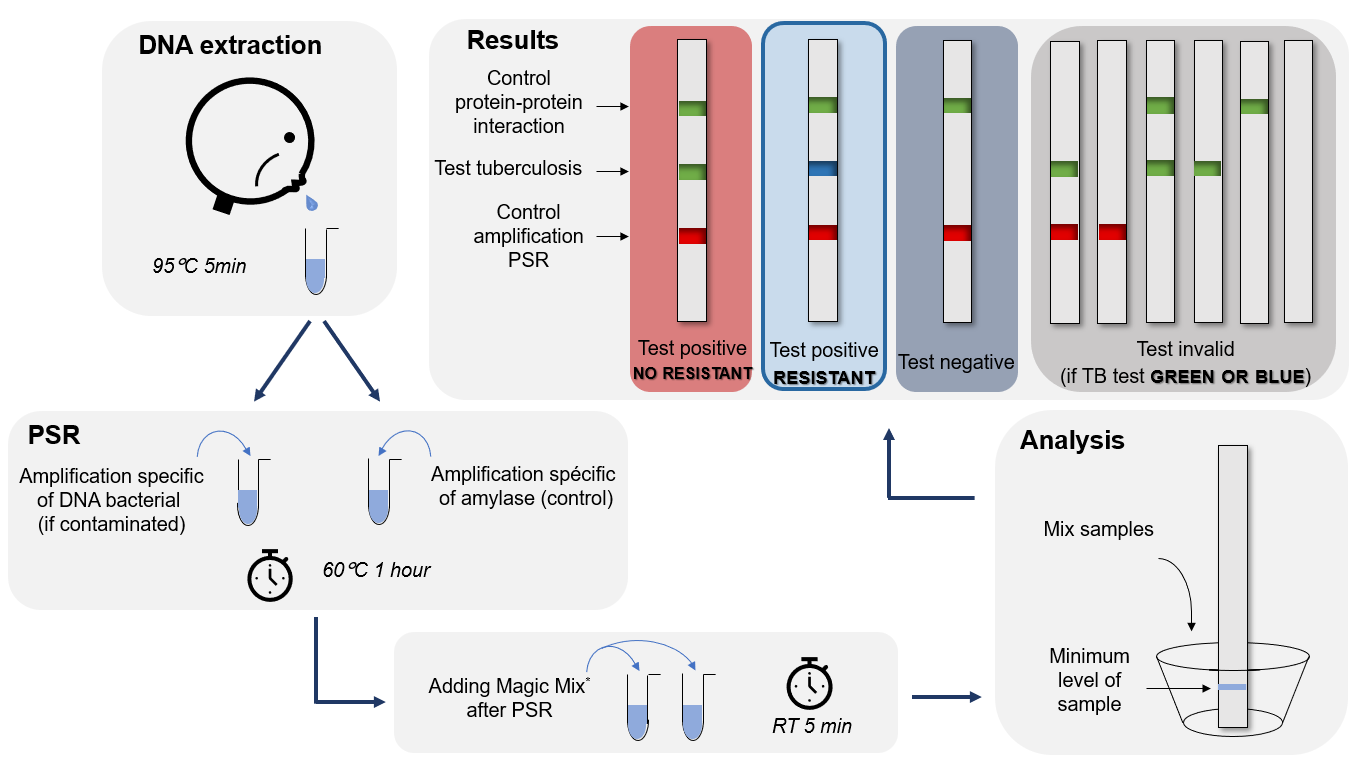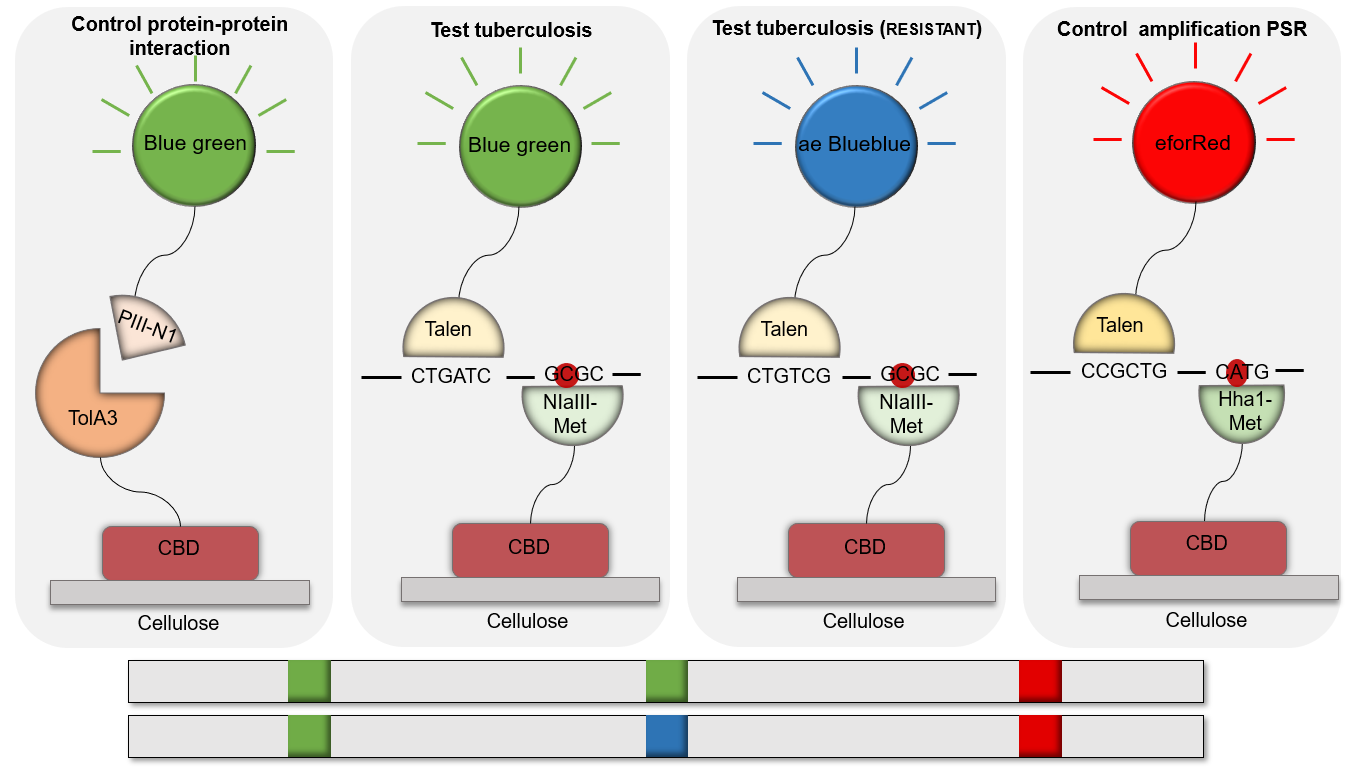How did we integrate human practices and how did it shape our design?
We had to make design choices that would result in an efficient, cheap and accessible TB diagnostics procedure. Interviews with local (Dr. Imbert and Dr. Canaan) and international specialists and doctors helped shape our design. They gave us an overview about the available procedures and what aspects to improve. Our initial design used a PCR-amplified antibody-based DNA detection test. However, conducted surveys among specialists highlighted the time consuming and expensive aspects of such procedures. Thus, at the core of the procedure is now the PSR, a time saving, cheap and accessible DNA amplification method and chromoproteins rather than antibodies.
Others suggested a new feature to include in the improved design: to make the diagnosis detect resitant forms of M. tuberculosis strains. Hence, we designed a new Tal (Tal3) protein capable of recognizing resistant strains through mutations in the rpoB gene sequence. Thus, we implemented a new cellulose strip to detect the resistant forms (picture below). Our procedure can now detect wild type and resistant M. tuberculosis. This will help apply the appropriate treatment accordingly.
Additional concerns about the procedure's proteins preservation were raised. To answer these concerns we designed an antifreeze protein to potentially stabilize the protein mix. Along these lines, we were able to apply most of the suggested changes to our design. We are now one step closer to an efficient, cheap and accessible TB diagnostics procedure.


When we started the project, we wanted to find out public's knowledge about TB, its diagnosis and treatment procedures. Do they know that TB is a major health problem in the world? That current diagnosis procedures are not always accessible and efficient for everyone? That TB is the 10th cause of death in the world?
To gain insight, we decided to conduct surveys. In our first surveys, we focused on the general public's opinion. We asked about their knowledge of the disease, its prevalence, diagnosis, vaccine, and treatments. The two other surveys we conducted were for doctors and specialists. We asked about the problems encountered with the current diagnostic procedures.
We were able to integrate most of the suggested improvements in our design. We are now one step closer to an efficient, cheap and accessible TB diagnostics procedure.
We had to make design choices that would result in an efficient, cheap and accessible TB diagnostic procedure. Interviews with local (Dr. Imbert and Dr. Canaan) and international specialists and doctors helped shape our design. They gave us an overview of the available procedures and what aspects to improve.
Our team was committed to providing community engagement activities that are inspiring and fun, as well as educational and interactive. We focused on interventions in public events (Science fair, Science festival...) as well as scientific events (20th biotechnology forum, MIT-hacking-medicine, Faculty seminar (on the 21st of November). We ran activities and presentations (Biology and Chemistry basics) that targeted adults as well as children. Our main ideas to deliver were: Tuberculosis awareness, I WANT TB FREE project, iGEM values and synthetic biology.
We aimed to make larger impact on our local community through spreading awareness of TB and synthetic biology on TV (AZUR TV) and through newspapers (Le Monde, college newsletter). Communication is more than having a conversation. If you are reading a newspaper, watching a documentary or texting your friend, you are involved in communication. Communication is becoming increasingly important. Through surveys, we found out that most people have limited knowledge about TB and the danger of such a disease. Following these lines, we came up with new means to spread awareness.
</div>


